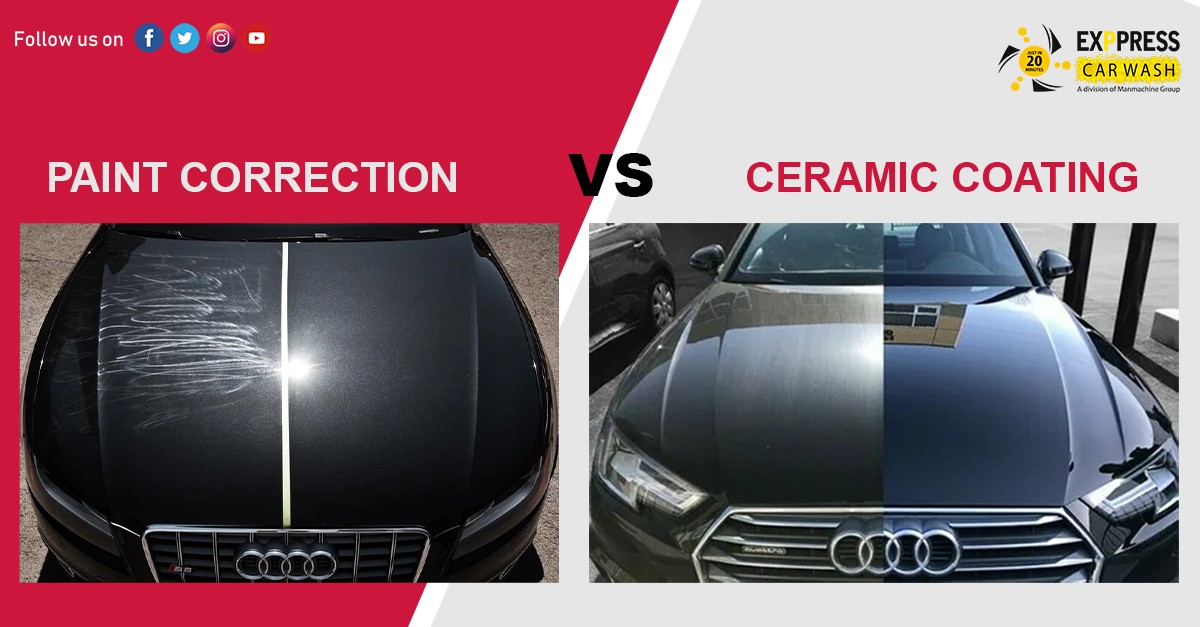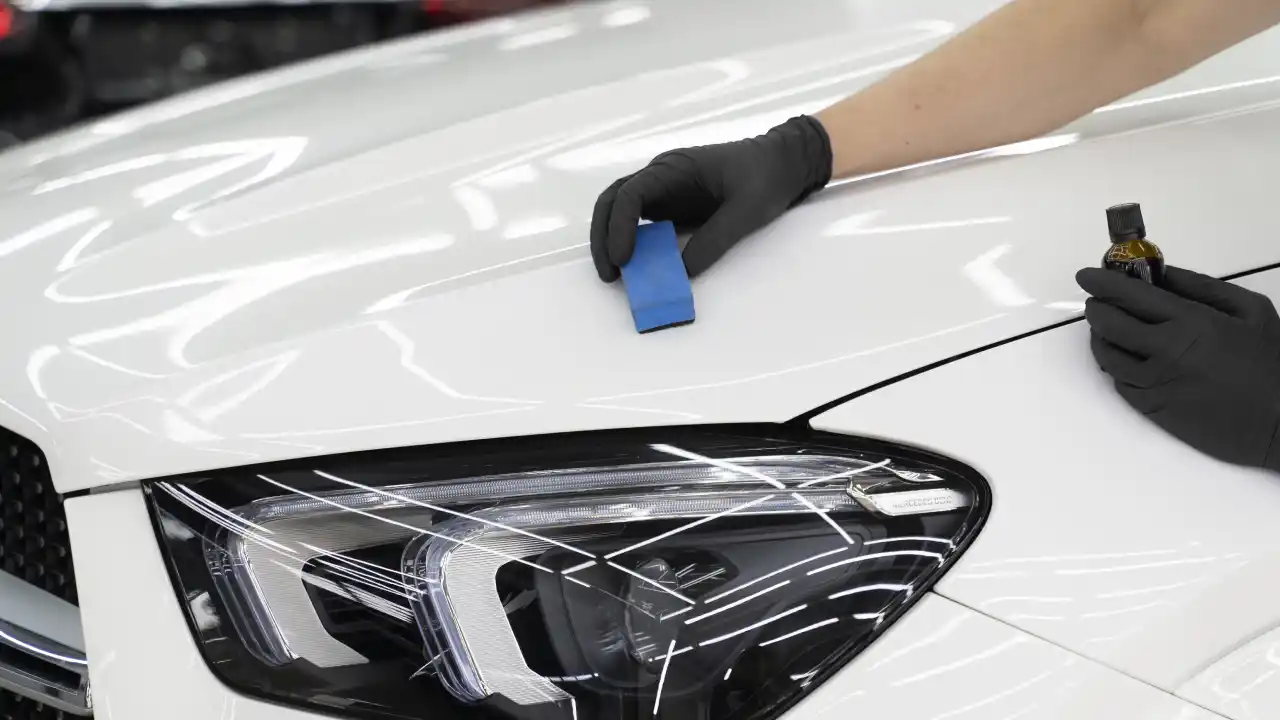Ceramic Coating: How It Supplies Unmatched Protection and Gloss for Your Car
Ceramic Coating: How It Supplies Unmatched Protection and Gloss for Your Car
Blog Article
Checking Out the Science Behind Ceramic Covering and Its Influence On Vehicle Outlining
The application of ceramic finishing in auto outlining represents a considerable development in vehicle care, rooted in its advanced chemical residential or commercial properties, mostly silica dioxide and titanium dioxide. Comprehending the scientific research behind these products exposes not only the safety advantages they offer however also their role in boosting a vehicle's aesthetic longevity. As we discover the details of the application process and the long-term ramifications for lorry maintenance, it ends up being clear that the selection of ceramic finishing can essentially alter one's technique to automobile treatment. What factors to consider should be made prior to devoting to this transformative option?
What Is Ceramic Covering?
Ceramic finishing is a modern-day remedy that has actually obtained popularity in the vehicle detailing market for its capability to offer resilient protection for automobile surface areas. This advanced protective layer is normally made up of silica dioxide (SiO2), which develops a solid bond with the vehicle's paint, creating a durable guard against ecological impurities. Unlike typical wax or sealers, ceramic layers use premium resistance to UV rays, chemical spots, and physical abrasions.
The application of ceramic finishing entails a meticulous procedure, where the vehicle's surface is thoroughly cleaned and sanitized prior to the covering is applied (Ceramic Coating). When healed, the coating improves the vehicle's gloss, depth, and quality, providing a showroom-quality finish that lasts for years. Among the crucial benefits of ceramic coating is its hydrophobic homes, which ward off water and dust, making upkeep less complicated and decreasing the frequency of cleans
The Chemistry of Ceramic Covering
A fundamental element of ceramic finish depends on its chemical composition, primarily characterized by the visibility of silica dioxide (SiO2) This substance is important to the formation of a sturdy, safety layer that bonds chemically to the automobile's surface. When used, the SiO2 particles undertake a process understood as polymerization, wherein they form a network of interconnected frameworks. This results in a durable, hydrophobic surface area that pushes back water and contaminants.
Along with SiO2, several ceramic finishings include titanium dioxide (TiO2) and various other ingredients to boost their efficiency features. TiO2, for instance, adds to enhanced solidity and chemical resistance. The interaction in between these compounds produces an unique molecular framework that provides a high degree of protection versus ecological elements such as UV rays, acid rainfall, and oxidation.
Additionally, the application process commonly includes a careful prep work of the surface to guarantee optimal adhesion of the covering. This chemistry not just ensures a long-lasting surface however likewise improves the visual charm of the car. Understanding the intricate chemistry behind ceramic layers is crucial for describing specialists who intend to provide exceptional defense and durability for their customers' automobiles.
Benefits of Ceramic Finish
While describing experts usually highlight the benefits of ceramic coverings, their benefits expand much past aesthetics. The primary advantage is premium defense against ecological contaminants. Ceramic coverings develop a hydrophobic surface that pushes back water, dirt, and grime, considerably lowering the regularity of washes and the effort needed to preserve a lorry's look. This safety layer likewise shields read this the paint from damaging ultraviolet rays, protecting against oxidation and fading over time.
Moreover, ceramic finishings improve the long life of the lorry's coating. Unlike standard waxes or sealants, which may last a few months, ceramic finishes can withstand for several years, supplying a long-lasting option for cars and truck treatment. This sturdiness equates to cost financial savings, as owners are much less most likely to require constant reapplication.
Furthermore, ceramic layers are resistant to chemical stains and etching, which can happen from acidic compounds like bird droppings or tree sap. This resistance not only protects the car's appearances yet likewise minimizes possible damages - Ceramic Coating. Overall, the investment in ceramic finishing supplies automobile proprietors a substantial return in regards to protection, convenience of maintenance, and lasting aesthetic charm, making it a significantly preferred choice in the realm of automotive outlining
Application Process Explained

When the surface is appropriately prepared, the ceramic coating can be applied. It is commonly performed in a controlled atmosphere, such as a garage or detailing bay, to stop contamination from dirt and debris. Making use of an applicator pad, the technician applies the coating in little areas, working in a crosshatch pattern to guarantee even insurance coverage. It is necessary to adhere to the supplier's instructions relating to application thickness and healing times.
Once treated, the ceramic finishing develops a strong bond with the paint, providing improved defense and a glossy surface. Proper application is vital to maximize the durability and performance click site of the ceramic coating.

Long-term Effect On Vehicle Treatment
The long-term influence of ceramic covering on lorry treatment is considerable, as it essentially changes how owners maintain their vehicles. By developing a resilient, hydrophobic layer on the lorry's surface area, ceramic finishes decrease the adherence of dirt, grime, and contaminants. This property decreases the frequency of washing called for, eventually preserving water and cleaning items.
Furthermore, the UV defense supplied by ceramic layers helps to avoid oxidation and fading of the car's paint, preserving its visual charm and resale worth in time - Ceramic Coating. This protective obstacle likewise decreases the probability of scratches and swirl marks, which prevail issues in typical paint finishes
Furthermore, ceramic finishes assist in less complicated maintenance, enabling owners to clean their cars with very little initiative. The smooth surface area makes it challenging for impurities to bond, enabling less complex elimination throughout routine cleansing.
In the future, the financial investment in ceramic finishing may cause cost savings in automobile care product or services. Overall, the withstanding advantages of ceramic layers not just improve the look of lorries however additionally add to a more effective and sustainable technique to vehicle upkeep.
Conclusion
In final thought, the application of ceramic layer represents discover this a substantial improvement in auto outlining, driven by its unique chemical composition of silica dioxide and titanium dioxide. This modern technology not just boosts the aesthetic charm of vehicles yet likewise provides robust security versus environmental hazards and put on. The long-term advantages, including decreased upkeep frequency and improved sturdiness, highlight the value of ceramic finishings as a vital financial investment for preserving lorry look and stability in time.

Report this page